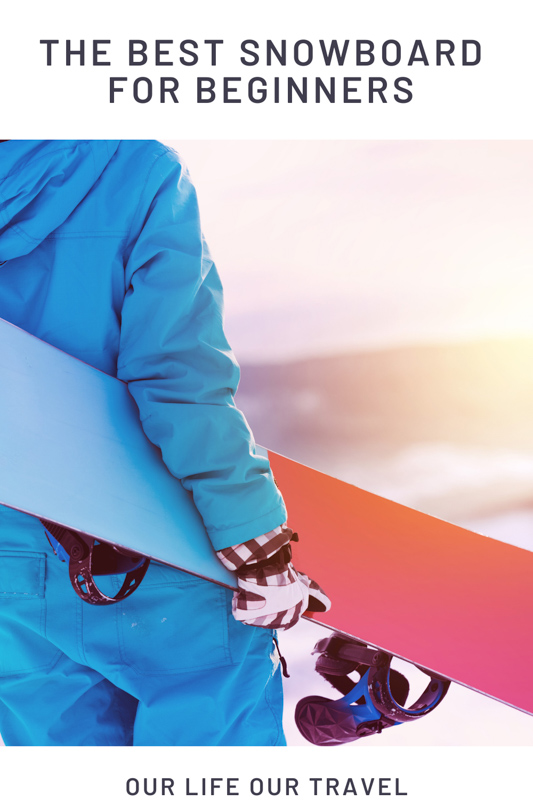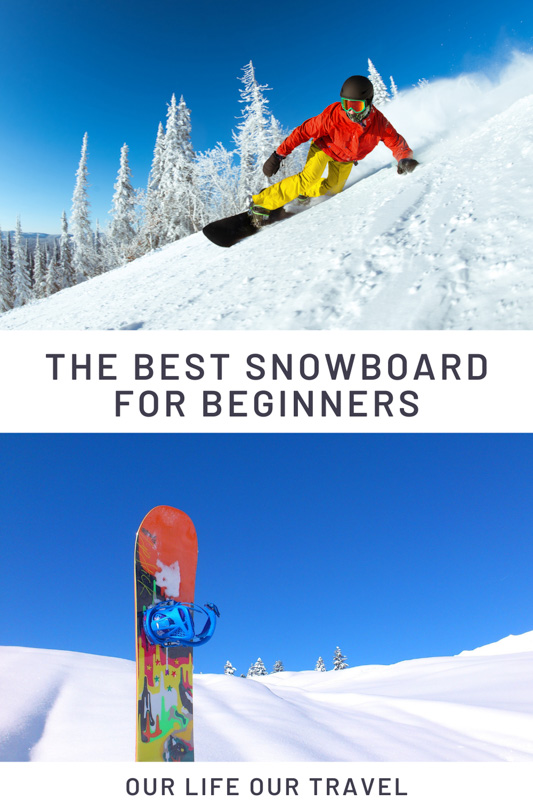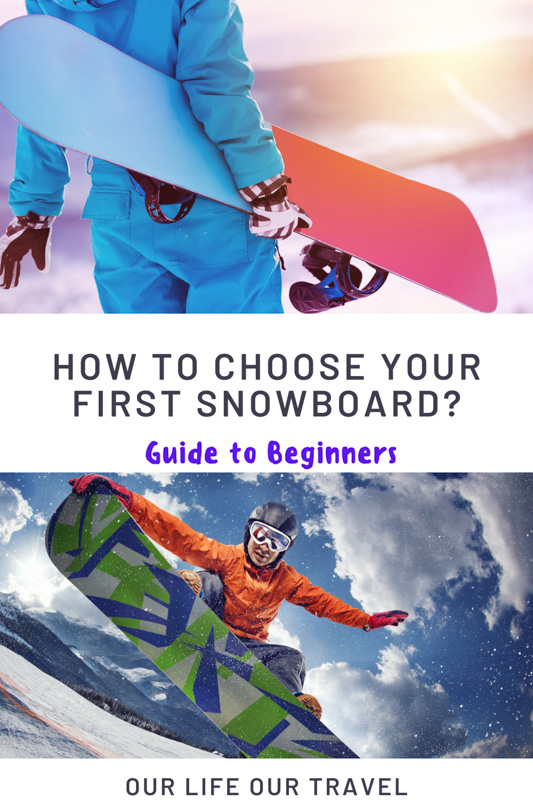Being in the mountains during the summer season is the perfect moment to create a unique photograph, while being in the same mountains during the winter is the perfect moment for snowboarding. If you are new to snowboarding and looking to buy a snowboard, you’ll need to decide what type of snowboarding you’ll do and understand what kind of board you’ll need to achieve this. And of course, dress warmly.
How 5 main characteristics define a snowboard ride, we’ll go through all these characteristics to help you understand what board best suits your riding style.
Disclaimer: The post may contain affiliate links.
Best Snowboard Type for Beginners

The first thing you’ll need to decide is what type of snowboarding you’ll be doing.
Check out our favorite beginner snowboard HERE!
All-mountain snowboards
As you might expect from the name, the all-mountain snowboard is a board that fits any terrain or conditions and performs anywhere on a mountain: from groomed runs and backcountry to the park and even the pipe. This makes them the perfect board for beginners and rental shops.
Freestyle Park snowboards
The freestyle park snowboards are generally shorter, lighter, and flexible snowboards made for snowboarders who enjoy landing tricks and jumps or like to jib on boxes and rails.
Because of the wide range of tricks, experienced snowboarders refine their freestyle park snowboard by adding or removing flexibility from their bord; Snowboarders who like to jib are picking softer boards (between 1/10 and 4/10), while snowboarders who’d like to take big jumps are often going for a less flexible board (a 5 or 6/10).
The flexibility and lightness of these boards make them less stable and slower on hard snow.
Freeride snowboards
The freeride snowboards are aggressive, directional, and stiff snowboards designed for adventurous snowboarders who like to go fast and spend their time off-piste to discover ungroomed snow.
Most of these freeride snowboards are directional, which means that they are designed only to go downhill. These boards generally have a setback stance, with more noise than the tail and a side cut that’s made to carve well and slash into powder – making them good in hard snow conditions.
Powder specific snowboards
The powder specific snowboards are designed to conquer deep powder snow and usually have a wider nose, with a sidecut and a setback which is usually greater than 20mm, which helps to float in the powder.
Best Snowboards for Beginners Comparison
| Snowboard (click on the name!) | Price Range | For Whom? | Specs and Details |
| Lucky Bums Kids Beginner Plastic Snowboard | $ | Kids (age 9 and up) | Board has a traditional snowboard cut, with glossy bottom and gentle edges. |
| Burton Chopper Kids Snowboard | $$ | Kids | Twin Shape and Twin Fley are perfectly symmetrical for balanced rides & Flat Top Bend provides stability, balance, and continuous edge control. |
| Roxa Glow Womens Snowboard | $$ | Women | Glow Flat camber provides a more loose, catch-free ride; Evenly distributes pressure for an overall balanced feel; Predictable board response with a comfortable flex |
| Burton Talent Scout Womens Snowboard | $$$ | Women | Directional Shape is the classic snowboard shape, designed to be ridden with a slightly longer nose than tail to concentrate pop in the tail while providing plenty of float, flow, and control to rip any terrain or condition. Twin Flex is perfectly symmetrical from tip to tail for a balanced ride that’s equally versatile regular or switch |
| Rossignol Circuit Snowboard Mens | $$ | Men | Directional All-Mountain flex provides increased control and stability for smooth turn initiation. 100% of Rossignol’s wood snowboard cores originate from sustainably harvested forests |
| Pasanhoo All Mountain Snowboards | $$ | Men | Perform on all terrain, from the trails to the backcountry, and even in the park. Twin Shape. Fiberglass with Poplar Wood Core. |
Snowboard Profiles
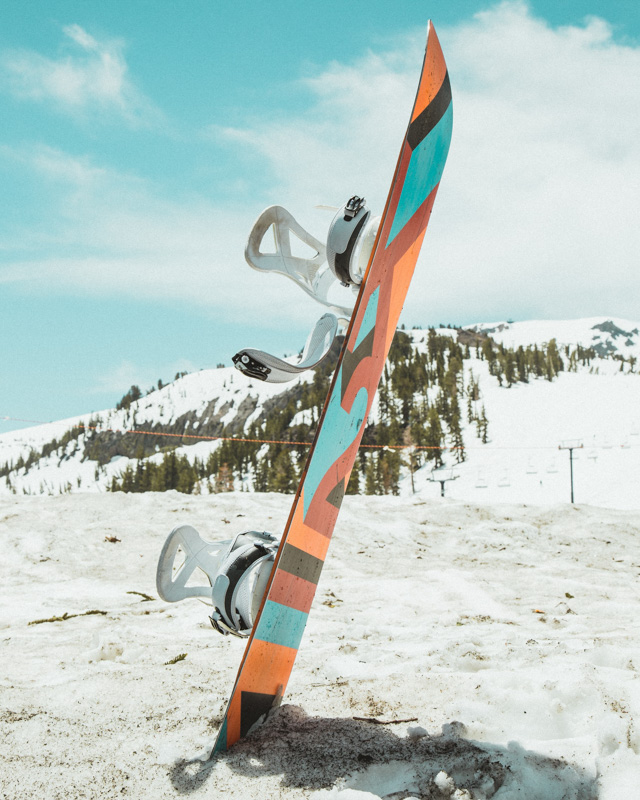
When you lay a snowboard on the ground and look at it from the side, you’ll notice with certain boards that the middle part rises off the snow, while the middle of other boards stays flat against the snow.
When a rider’s weight applies downward pressure on a snowboard, the differences in snowboard profile will have a massive effect on how a board feels and moves when you ride it.
We’ve listed all the different profiles below.
Flat profile
As illustrated in the pictures above, a flat profile snowboard is neutral and doesn’t contain any camber. These boards are made for quick turns and maximize the feel while increasing float, all while they give you more stability.
Flat profiled boards are good for riding rails, bombing hills, and turning easily.
Camber profile
A camber profile snowboard is a board with a bend in the middle, made, so the energy and pressure are divided between the two contact points: the nose and the tail.
This board type is very effective for snowboarders who like to jump and take hard turns (“carving”). While this is the most common profile, it’s also the profile most experienced and speed-oriented riders prefer.
Rocker profile
A rocker – also nicknamed a ‘reverse camber’ – is the exact opposite type of a camber profile. It’s where only the middle part of the snowboard hit the ground, having an upturned nose and tail.
This type of board is designed for slopes with a lot of powder (off-piste) and when jibbing on boxes of rails in the park.
Most beginners start with this type of profile because both the tip and tail are free of catching snow from the surface, making it the easiest type to learn how to snowboard.
Hybrid Camber/Rocker profile
The Hybrid Camber and Rocker profiles are boards that combine these two profiles to find the perfect mix and address particular performance features. Most of these hybrid camber profiles are made to chase deep powder off-piste.
Backseat Camber profile
The Backseat camber is a modified traditional camber profile, which has a shortened camber section shifted toward the tail of the board.
This tight turning snowboard is ideal for tighter areas like when you’re riding through tree sections in deep powder. However: Due to their design, these backseat camber boards are directional, and they do not ride well in a switch.
Snowboard Shape
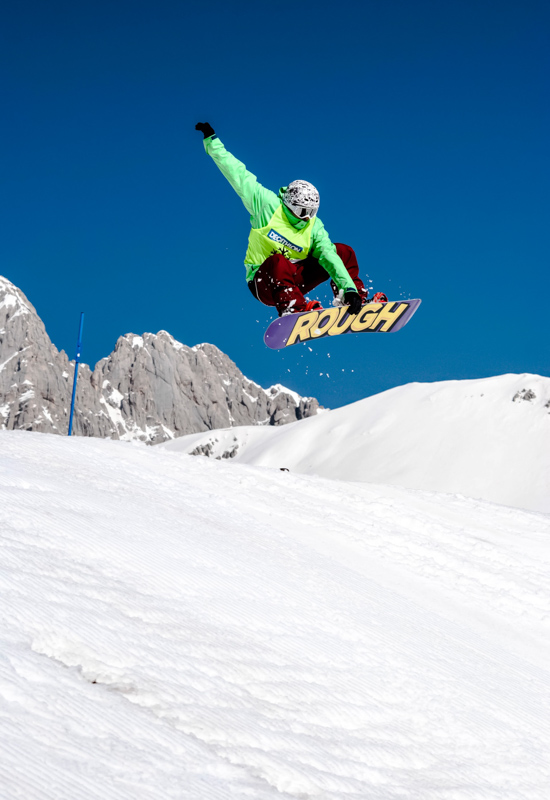
In the past couple of years, the snowboard community has developed a totally new snowboarding style in which the shape of snowboards has drastically changed.
Twin Shape
The twin shaped snowboards are the most popular in the world of snowboarding. This is because both the nose and tail are shaped the same. This is perfect for all-mountain riders, beginners, and those who expect to be riding switch.
Snowboarders who’d like to take jumps or jib boxes prefer this shape since it allows them to land in both directions.
Check out snowboards with twin shapes for men, women, and for kids here.
Directional snowboards
Directional snowboards are designed to ride best in one direction, which is why they are often used by snowboarders who like to freeride and powder ride.
From a structural point of view, these boards are often stiffer in the tail with a wider and softer nose that helps snowboarders stay afloat in powder and maintain stability while carving at high speeds. Typically, the binding inserts on these boards are set back to be closer to the tail.
Directional Twins
A combination of twin and directional snowboards, directional twins are a mix of both shapes: they have a symmetrical shape (similar size tip and tail) combined with a directional core (softer tip than tail).
These types of snowboards are mostly used to conquer all-mountain and freestyle terrain.
Asymmetrical (ASYM) Snowboards
The concept of an asymmetrically shaped snowboard is that the board is not symmetrical from front to back; they’ll have distinct sidecuts on each edge of the board, designed to improve heelside turning and edge control.
This for the simple reason that bent knees can only point toward the toes, making it more difficult to maintain the same leverage and control over the heelside edge. Shortening and deepening the heelside sidecut helps compensate for this natural disadvantage and allows the rider to make quicker, tighter, more responsive heelside turns.
Snowboard Flex
The snowboard flex rating is essentially exactly as it sounds: it describes how flexible a board is.
- 1 to 2 flexibility: soft boards preferred by freestyle riders who like to ride park
- 3 to 6 flexibility: Freestyle riders who prefer to jump
- 4 to 7: The majority of all mountainboards
- 7 to 10: Freeride snowboards
The final flex of your snowboard will depend on your weight: the lighter you weigh, the more flexible you’ll want your board because it impacts the difficulty of controlling the board.
Snowboard Length
Finally, to help you choose the right snowboard length, you’ll need to consider your height and weight while also thinking about the type of snowboarding you plan to do.
Previously, people would pick their board lengths by standing next to their boards and see how tall they were in relation to themselves. If their board’s nose reached somewhere between their chin and nose, it was deemed the right size.
Nowadays, most snowboard manufacturers have length and weight recommendations listed on their boards.
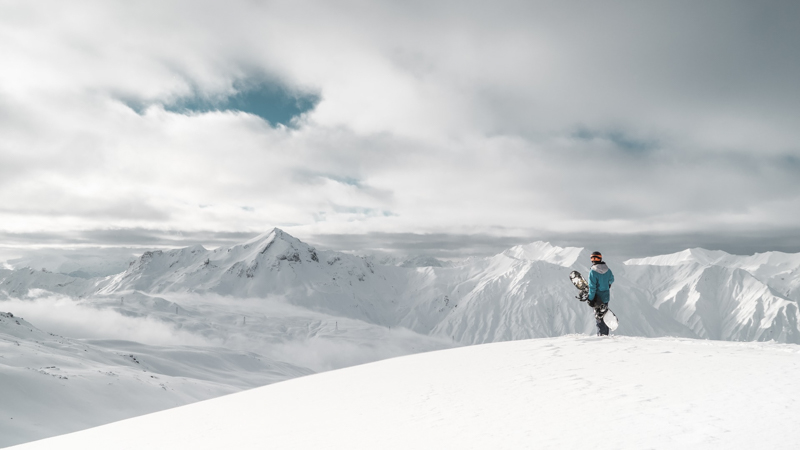
The final tips before you buy your first snowboard
With all these characteristics in mind, you’ll be able to pick your first snowboard. For most beginners, you’ll be looking at a snowboard which:
- It has a lower price point.
- Has a flat camber between the feet for greater stability, preferably a rocker profile.
- Soft flex in the middle (3 to 5 flex, depending on your weight)
Personally, I learned to snowboard on a DC Focus board with a 5/10 flex-rating and a rocker camber.
Pin for later!
About the Author: Wanderlust Pulse
Wanderlust Pulse, a community of travel photographers, aims to help you discover new locations and learn more about photography.


